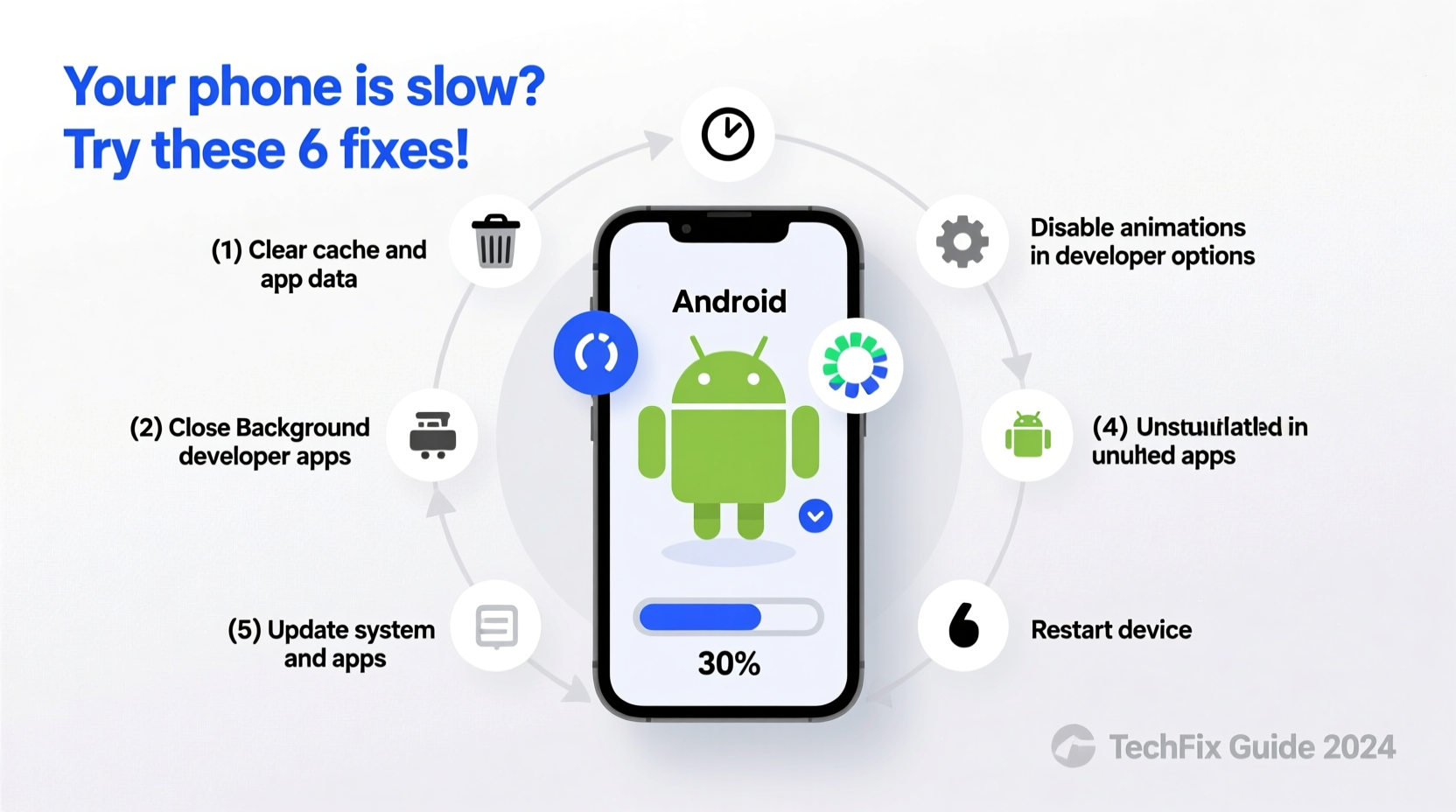Over time, even the most powerful Android phones can begin to lag, freeze, or take forever to open apps. It’s frustrating when a device that once felt lightning-fast now struggles to keep up with daily tasks. The good news is that slowdowns are rarely permanent. Most performance issues stem from avoidable software clutter, misconfigured settings, or outdated components—problems you can diagnose and resolve without needing technical expertise.
Understanding the root causes of sluggish performance is the first step toward restoring your phone’s responsiveness. Whether your device is three months or three years old, these practical strategies will help you reclaim speed, improve efficiency, and extend its usable life.
Common Causes of Android Slowdowns

Before jumping into fixes, it helps to know what’s dragging your phone down. Unlike physical wear, digital slowdowns usually result from accumulated inefficiencies:
- Bloatware and background apps: Pre-installed apps and poorly optimized third-party services often run in the background, consuming memory and CPU.
- Storage saturation: When internal storage drops below 10–15% free space, system operations slow dramatically.
- Outdated software: Old operating systems and unpatched apps may lack optimizations and security updates critical for smooth performance.
- Too many widgets and live wallpapers: These visual elements constantly refresh data and graphics, taxing the processor.
- Fragmented cache and app data: Over time, cached files become disorganized, forcing the system to work harder to retrieve information.
“Performance degradation on Android devices is more often due to software bloat than hardware limitations.” — Dr. Lena Torres, Mobile Systems Analyst at TechInsight Labs
Step-by-Step Guide to Speed Up Your Android Phone
Follow this structured approach to systematically eliminate performance bottlenecks. Start from the simplest checks and progress to deeper interventions if needed.
- Reboot your device regularly. A simple restart clears RAM, stops rogue processes, and resets network connections.
- Check battery usage by app. Go to Settings > Battery > Usage. Apps consuming excessive power are likely running heavy background processes.
- Disable or uninstall unused apps. Remove anything you don’t use, especially social media tools, weather widgets, and promotional apps.
- Clear app cache and data. Navigate to Settings > Apps > [App Name] > Storage > Clear Cache (and Clear Data if safe to do so).
- Free up storage space. Delete old photos, videos, downloads, and duplicate files. Use built-in tools like “Smart Storage” (on Samsung) or “Files by Google.”
- Turn off animations. Developer Options > Window/Transition/Animator scale > Set all to 0.5x or off.
- Update your OS and apps. Outdated software runs slower and less securely.
- Switch to dark mode and reduce screen timeout. Less strain on the display improves overall system responsiveness, especially on OLED screens.
- Remove unnecessary home screen widgets. Each widget polls data continuously—fewer widgets mean fewer background queries.
- Factory reset as last resort. Backup data first, then wipe the device to return it to a clean state.
Do’s and Don’ts: Optimizing Android Performance
| Do | Don't |
|---|---|
| Keep at least 2GB of free storage available | Fill your phone to over 90% capacity |
| Use lightweight launchers like Nova or Lawnchair | Install flashy launchers with heavy animations |
| Enable adaptive battery features | Leave Bluetooth, GPS, and Wi-Fi on constantly |
| Review app permissions monthly | Allow apps to run in background freely |
| Restart your phone weekly | Leave your phone running for weeks without rebooting |
Real Example: Reviving a Sluggish Mid-Range Device
Jamal had a two-year-old Pixel 5a that started freezing during calls and taking 10 seconds to open messages. He noticed it was warm even when idle. After checking battery usage, he found a weather widget and an old fitness tracker consuming 38% combined. He uninstalled both, cleared cache for his messaging app, and disabled live wallpaper. He also deleted 4.2GB of downloaded podcasts he no longer needed.
The next day, his phone booted 40% faster, app launches were nearly instant, and temperature normalized. Jamal didn’t need a new phone—just better maintenance habits.
Troubleshooting Checklist
Use this checklist to quickly assess and act on performance issues:
- ✅ Restart the phone
- ✅ Check available storage (aim for >15% free)
- ✅ Uninstall unused or suspicious apps
- ✅ Clear cache for top 3 battery-draining apps
- ✅ Disable auto-sync for non-essential accounts
- ✅ Turn off location tracking for apps that don’t need it
- ✅ Update Android OS and all critical apps
- ✅ Reduce home screen complexity (widgets, shortcuts)
- ✅ Enable battery saver mode temporarily for testing
- ✅ Perform factory reset if all else fails
Frequently Asked Questions
Will clearing cache delete my personal data?
No. Cache contains temporary files like thumbnails and session data. Clearing it won’t affect photos, messages, or account logins. However, some apps may take slightly longer to load the next time as they rebuild their cache.
Is it safe to disable system apps?
Disabling pre-installed system apps (like bloatware) is generally safe and can improve performance. However, avoid deleting them unless you’re certain of their function. Critical services like Google Play Services should never be disabled.
How often should I restart my Android phone?
Once a week is ideal. Regular reboots prevent memory leaks, clear background processes, and apply pending updates. If your phone feels sluggish, a restart should be your first action.
Conclusion: Take Control of Your Device’s Performance
A slow Android phone doesn’t mean it’s time to upgrade. Most performance issues are fixable with smart maintenance and informed choices. By managing storage, controlling background activity, and keeping software current, you can restore snappy responsiveness and extend your device’s lifespan by years.









 浙公网安备
33010002000092号
浙公网安备
33010002000092号 浙B2-20120091-4
浙B2-20120091-4
Comments
No comments yet. Why don't you start the discussion?